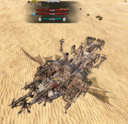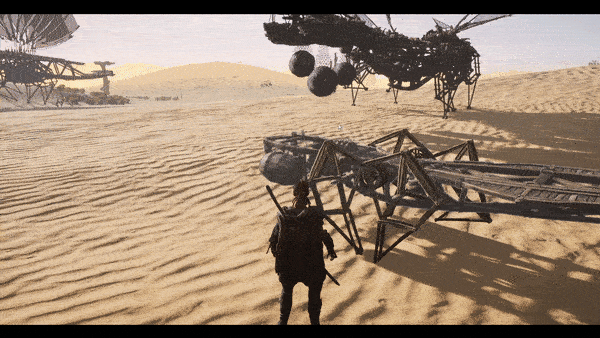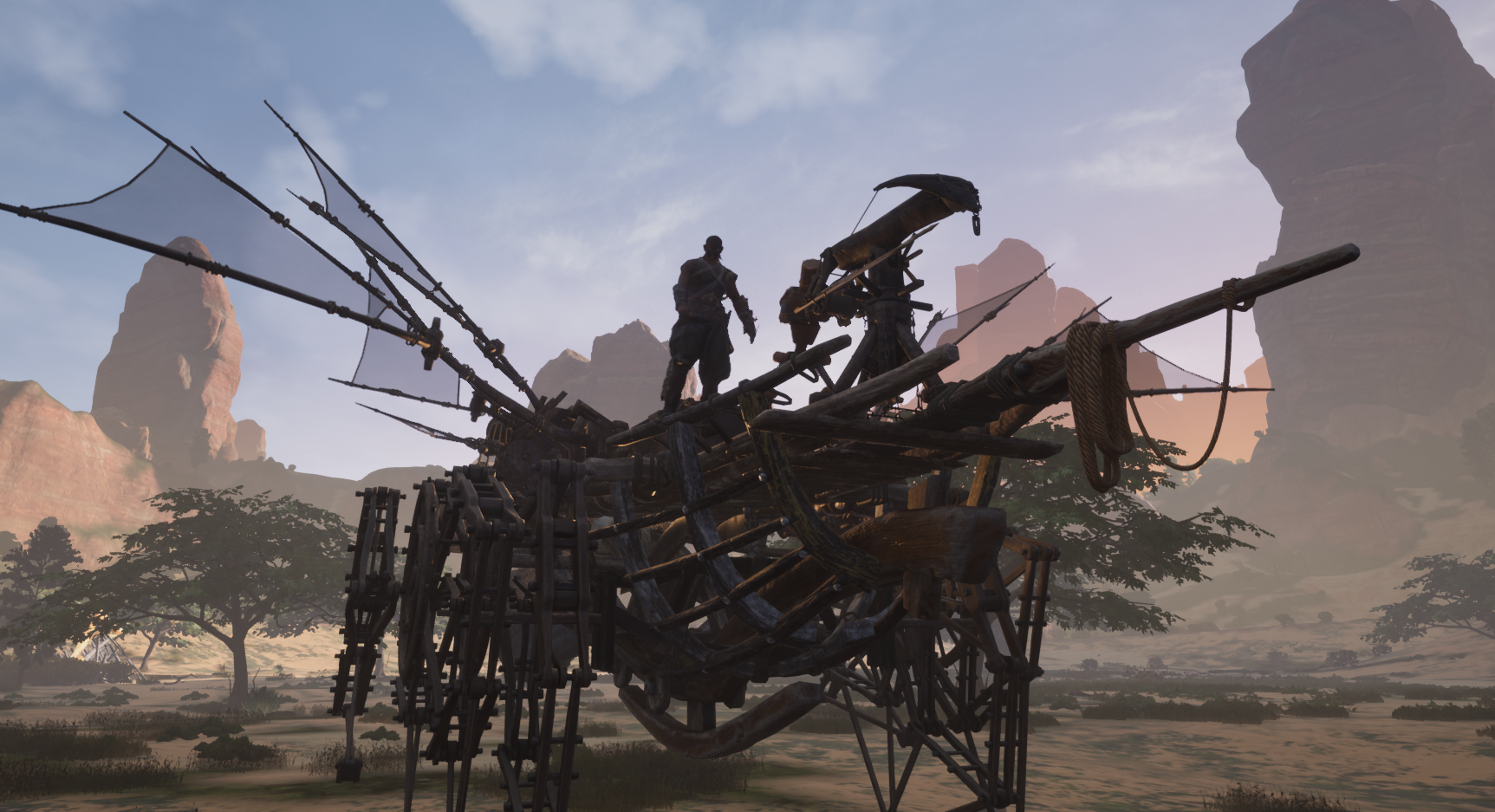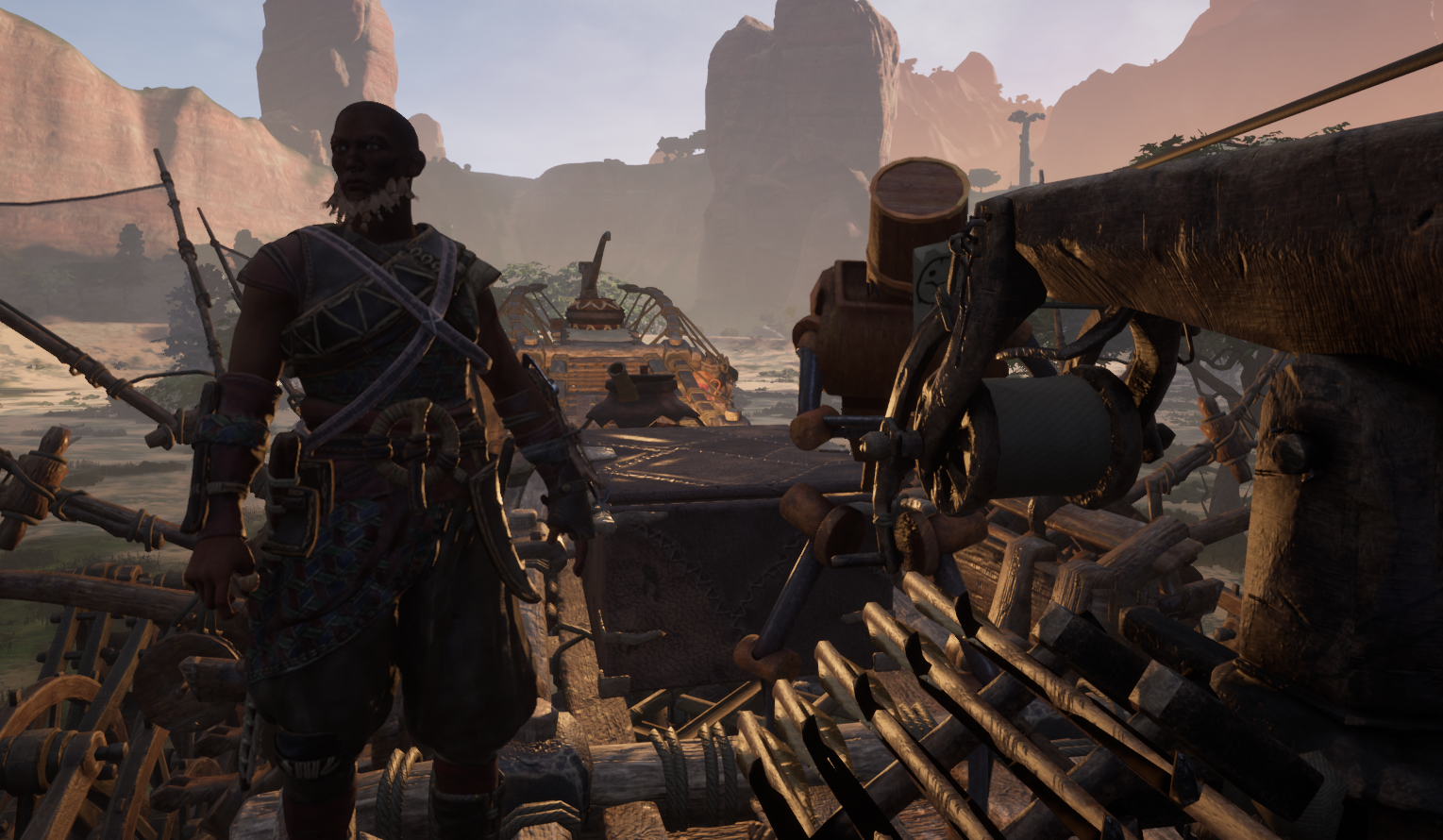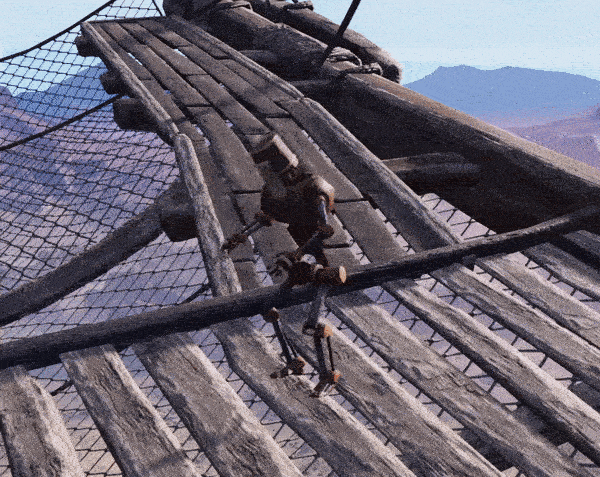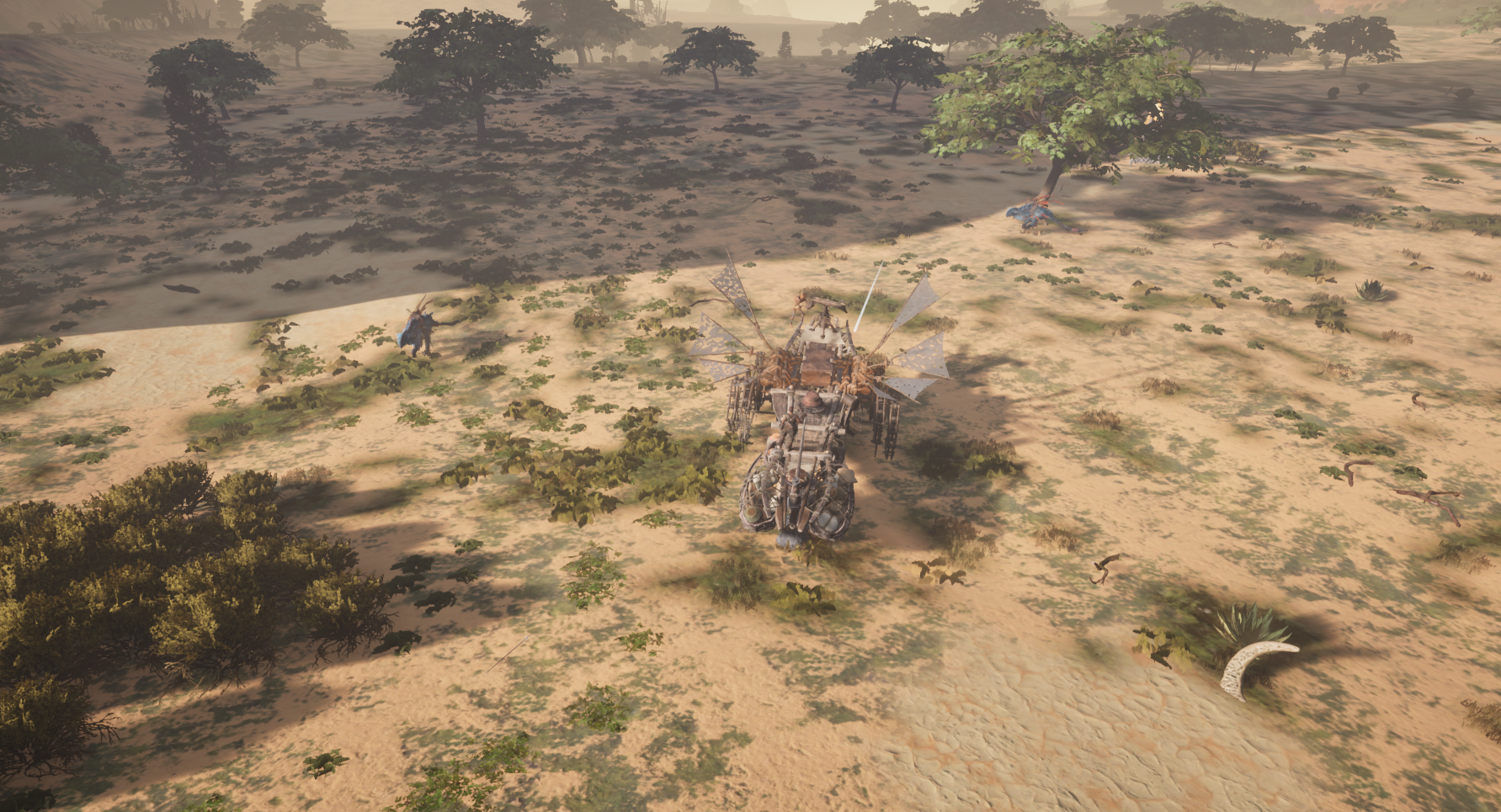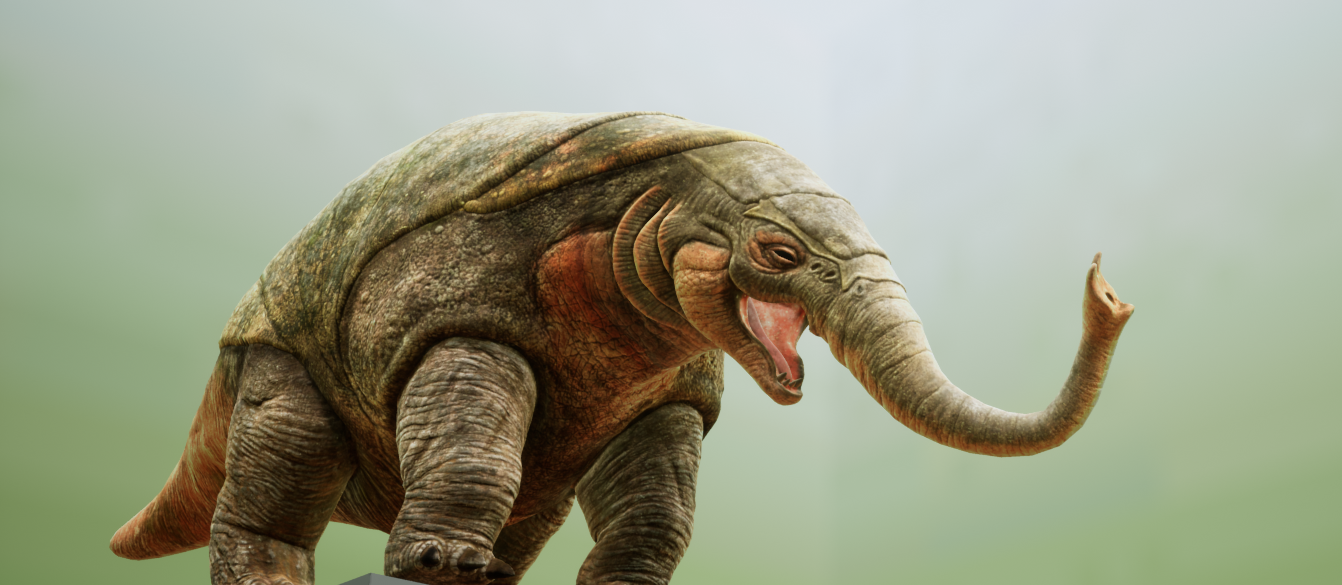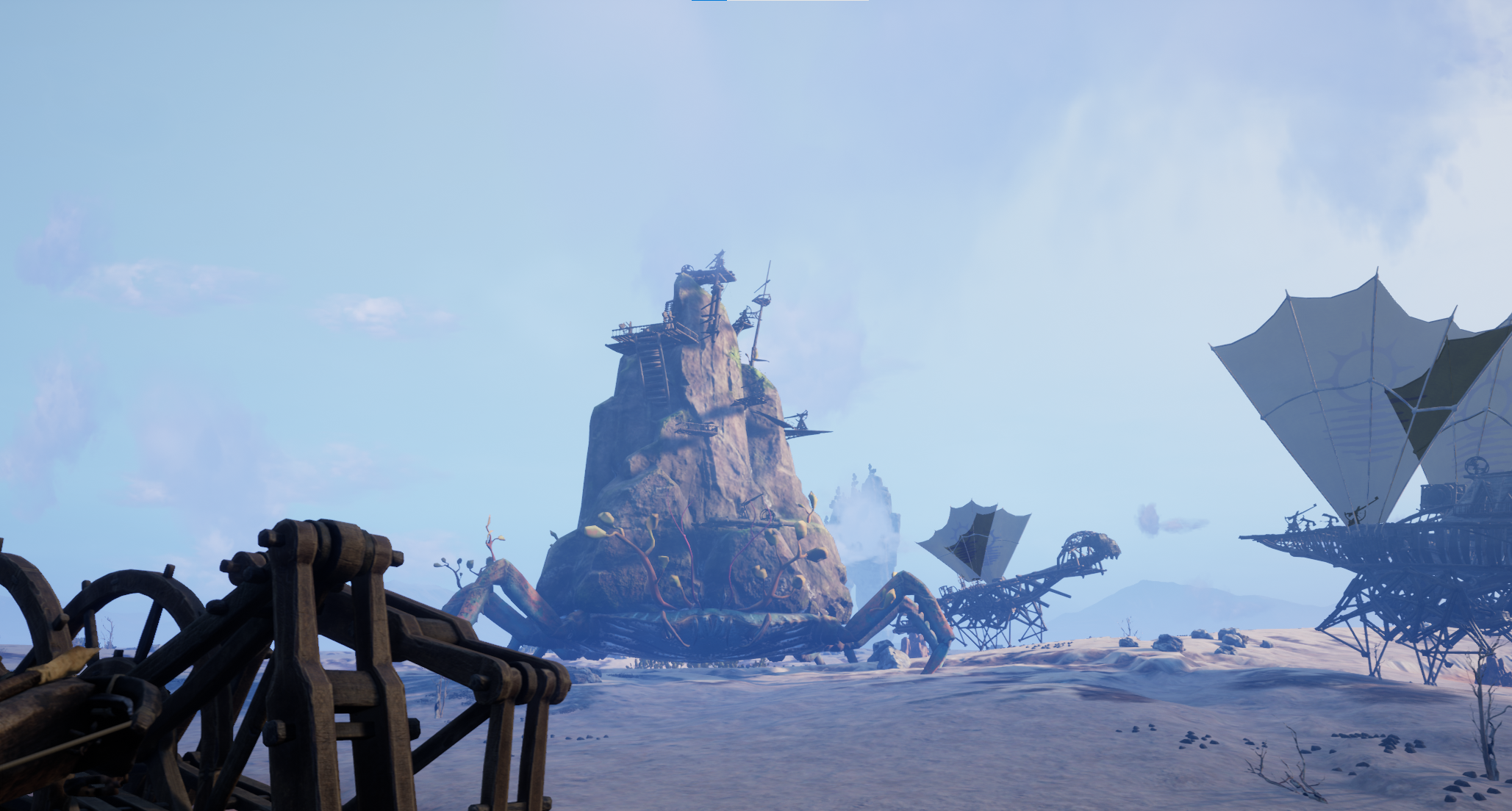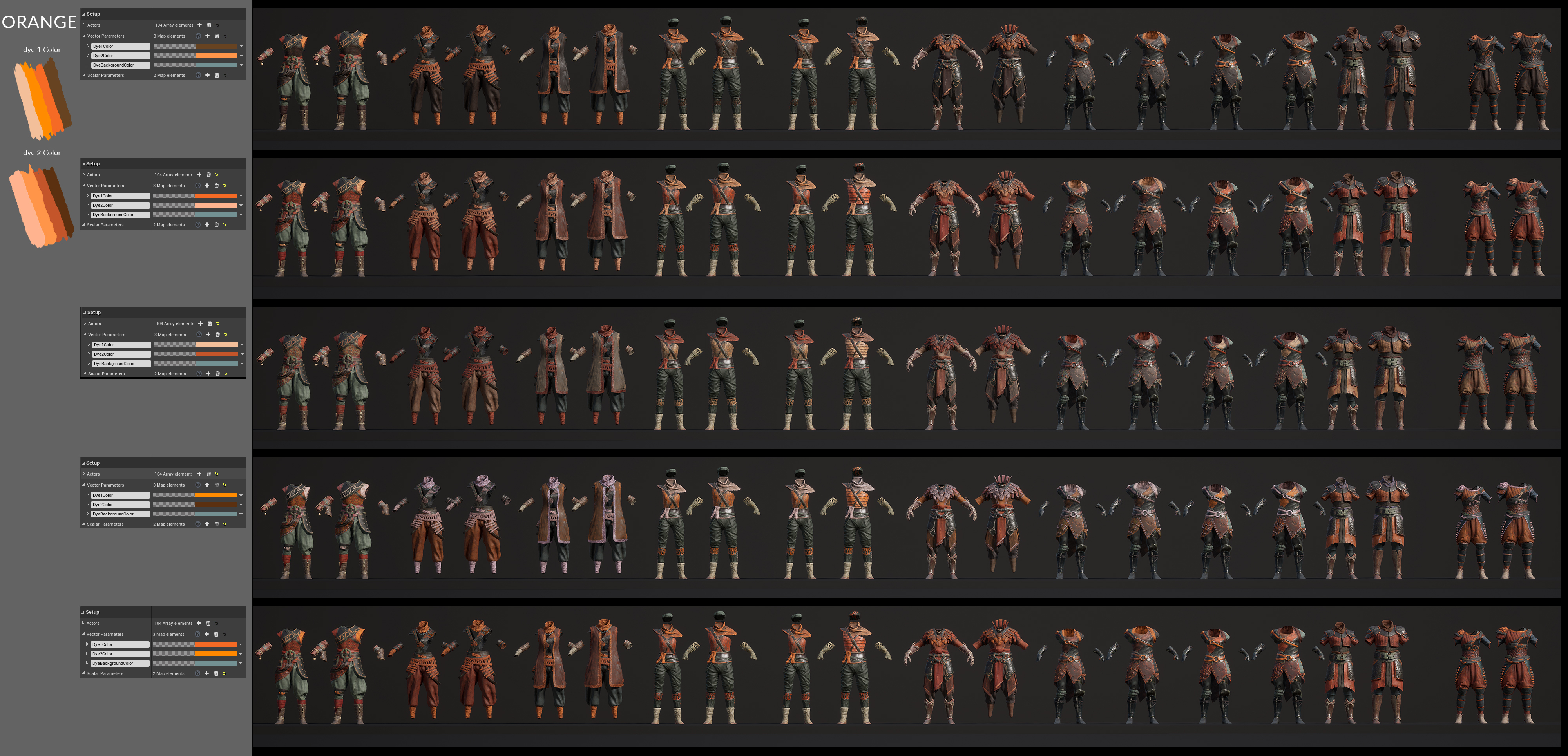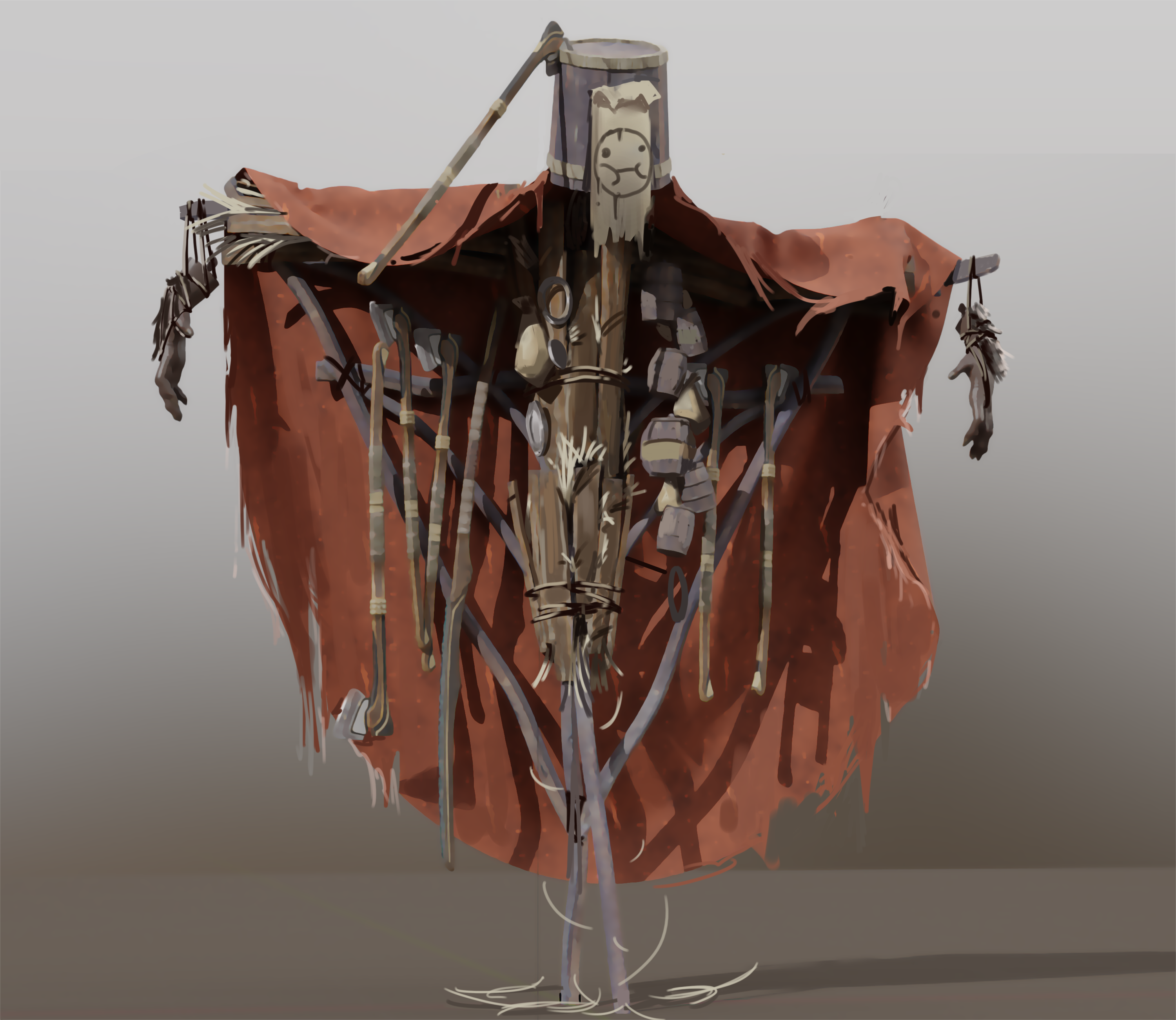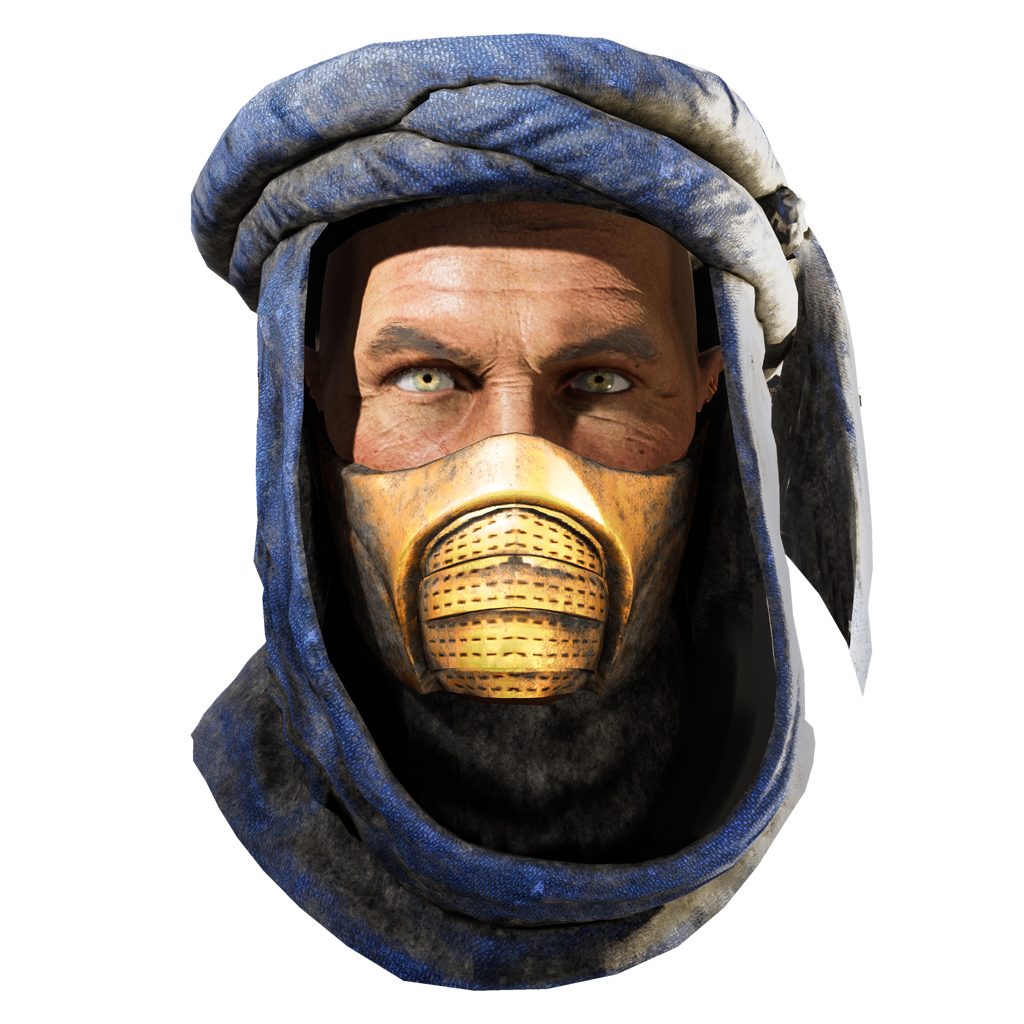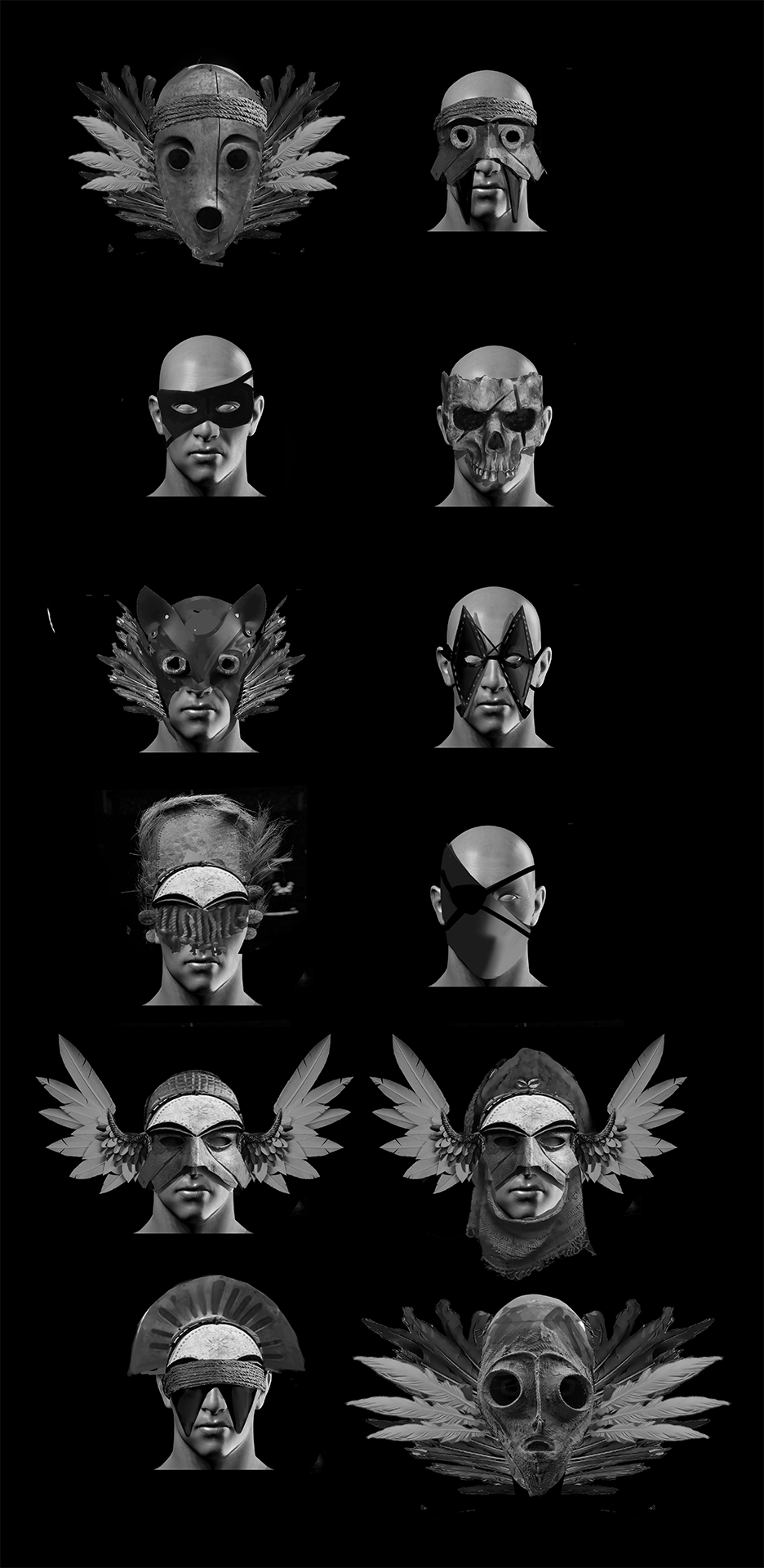
May 13, 2022
Last Oasis - not_so_gladiator
Hi Nomads!
Before we start this week’s devblog, I’d like to acknowledge the absolutely massive amount of feedback we got for the previous one and the follow-up post we did on it. It has been great to see the response from the community to both posts and be able to gather very valuable, very early feedback on (even if just) one of the reworked systems for S5.
As we’ve done before, we’ll be splitting the devblog into sections, the first one dedicated to the design and specifics of this new system, and the second dedicated to putting forward our reasoning for why reworking this specific feature, what are our intentions with the changes, and some technical considerations on it.
You can rest assured that it won’t be the last controversial topic we get into - keep an eye out for the end of this post, we’ll be talking a little bit about the next two future devblog topics - but for now, let’s get into the quality rework.
Our first step for this rework is to completely get rid of the old system, and start fresh with a new one with a different approach from design perspective, and a different implementation from technical perspective. The replacement is to be a Rarity system, which is essentially Common-Uncommon-Rare-Epic-Legendary kind of tiers, with the possibility of adding more in the future (one of our considerations, and actually a community suggestion, is to implement any future additions to the system through extremely rare drops, which we think is a very cool idea).
At the moment, the rarity system is very much a work in progress, with only the crucial parts implemented into our internal version of the game - for the beta branch, it will be in a very early iteration design and balance wise, we don’t expect it to have the full functionality described below, we hope to discuss with you and work with your feedback when it comes to some of the more radical changes coming with the system, especially when it comes to the balance aspect of it.
One of the primary design goals for this system is to remove a lot of the unnecessary complexity and create more discrete jumps in tangible value of Walkers, items, structures, etc. - right now it’s not very clear in-game whenever something has clearly improved thanks to having a higher quality level than default, and that’s something we will be focusing on fixing with changes.
Although we’ll be keeping some of the core functionalities from the old quality system, our number one priority is that it works properly with, and reinforces the changes we’ve done to the progression system - changes we will reveal more about in a future devblog.
The actual effect we intend rarity to have on S5 gameplay is very far reaching - the system is designed to interact with a lot of things in the game, and we’ll have a much more detailed look into it down below.
Speaking of core functionalities, Tools are a very important part of the game’s progression system, and have always been a core requirement to get into the old quality grind - for next season, we’re adding more tools to the game (as well as performing a rebalancing pass on existing ones) that were missing before across the different tiers. For example, right now there’s only Sickle and Scythe, which require bone and ceramic, but it does not go further than that, and also caused issues with the old quality system due to tool tiers being very far apart for both tools. We’re changing that in order to make it so the tools follow the same resource / tier that weapons do. We’ll be taking a look into the entire rebalance across the board pretty soon, though, this is a small part of that process, and more related to how tools interact with rarity system and harvesting rare materials from creatures and resource nodes.
Our intention with this rework is two-fold, there’s both technical and gameplay / design reasons why we needed to change the way quality worked in the game.
For the technical side of things, the old quality system wasn’t meant to work with some of the things we want the new system to interact with - some examples for this are the creatures, both Mobs and Rupu, the POI around the maps, and even smaller things such as quests from the Trading Station.
The rarity system is built with these effects already in mind. We want our POI system to take advantage of this feature, we want the mobs and Rupu that spawn on POI and around the world to have different stats and behaviors based on their rarity, and of course, the loot tables for them and any interactable loot coming from sources of higher rarity.
While with the old quality system it was not possible to easily determine a creature’s quality level, it will now be possible to easily tell, from a distance with a rangefinder or up close by looking at the mob, whether or not it’s a higher rarity creature. This is rather important for us because of how the mob difficulty scaling across maps and rarity will be balanced, and we want to make sure that players aren’t charging head-on toward enemies that at default rarity they can easily defeat, but at higher they become a lot more dangerous.
This is not to say the only new effects this system will have are dedicated to mobs. There are many other things in the game that the quality system was not interacting with (or it had a very poor interaction that improved very little), some examples are Walker hulls, as well as Walker parts - in the case of hulls, it only ever provided more module slots, which was in all honesty a very small reward for a (at times) pretty big grind. In the case of Walker Legs and Wings, it never did anything at all. That’s something that will be changing in the next season, higher rarity Walker hulls and Walker parts should provide improvements to HP and armor, bonuses to acceleration, on top of module slots.
With our focus on having oases with scarcer materials and renewed dangers, we want to make sure that the rewards are on point with the difficulty of getting them.
Secondly, and this time related to gameplay / design: our old quality system was not very intuitive at all. From the moment the game launched, the vast majority of players needed to use guides outside of the game in order to understand how to progress using quality resources, how to craft quality items, and generally how the system itself worked - and that wasn’t all, we also had these weird workarounds in-game that players came up with, in order to achieve specific quality levels for resources (like the craft-disassemble method that was used to get specific high quality resources using low-end resources).
We’d like to avoid that completely, and instead focus on a more straightforward system that is easier for players to understand and play with (in-game, we want to keep away from implementing features and mechanics that require you to pause what you’re doing in the game, and go look it up on a wiki), while also retaining and improving the gameplay centered around hunting for high quality resources, and actually making that a bigger part of the game.
As mentioned in the beginning of this devblog Hardpoints system would not be the last controversial S5 feature we showcase, so here’s a headsup: Our next two devblogs might be the most controversial changes we have decided upon so far - as chadz mentioned last week, we consider Season 5 practically an entirely new experience, and with that come completely re-designed core features of the game
— Neon
Before we start this week’s devblog, I’d like to acknowledge the absolutely massive amount of feedback we got for the previous one and the follow-up post we did on it. It has been great to see the response from the community to both posts and be able to gather very valuable, very early feedback on (even if just) one of the reworked systems for S5.
As we’ve done before, we’ll be splitting the devblog into sections, the first one dedicated to the design and specifics of this new system, and the second dedicated to putting forward our reasoning for why reworking this specific feature, what are our intentions with the changes, and some technical considerations on it.
You can rest assured that it won’t be the last controversial topic we get into - keep an eye out for the end of this post, we’ll be talking a little bit about the next two future devblog topics - but for now, let’s get into the quality rework.
Design
Our first step for this rework is to completely get rid of the old system, and start fresh with a new one with a different approach from design perspective, and a different implementation from technical perspective. The replacement is to be a Rarity system, which is essentially Common-Uncommon-Rare-Epic-Legendary kind of tiers, with the possibility of adding more in the future (one of our considerations, and actually a community suggestion, is to implement any future additions to the system through extremely rare drops, which we think is a very cool idea).
At the moment, the rarity system is very much a work in progress, with only the crucial parts implemented into our internal version of the game - for the beta branch, it will be in a very early iteration design and balance wise, we don’t expect it to have the full functionality described below, we hope to discuss with you and work with your feedback when it comes to some of the more radical changes coming with the system, especially when it comes to the balance aspect of it.
One of the primary design goals for this system is to remove a lot of the unnecessary complexity and create more discrete jumps in tangible value of Walkers, items, structures, etc. - right now it’s not very clear in-game whenever something has clearly improved thanks to having a higher quality level than default, and that’s something we will be focusing on fixing with changes.
Although we’ll be keeping some of the core functionalities from the old quality system, our number one priority is that it works properly with, and reinforces the changes we’ve done to the progression system - changes we will reveal more about in a future devblog.
The actual effect we intend rarity to have on S5 gameplay is very far reaching - the system is designed to interact with a lot of things in the game, and we’ll have a much more detailed look into it down below.
Speaking of core functionalities, Tools are a very important part of the game’s progression system, and have always been a core requirement to get into the old quality grind - for next season, we’re adding more tools to the game (as well as performing a rebalancing pass on existing ones) that were missing before across the different tiers. For example, right now there’s only Sickle and Scythe, which require bone and ceramic, but it does not go further than that, and also caused issues with the old quality system due to tool tiers being very far apart for both tools. We’re changing that in order to make it so the tools follow the same resource / tier that weapons do. We’ll be taking a look into the entire rebalance across the board pretty soon, though, this is a small part of that process, and more related to how tools interact with rarity system and harvesting rare materials from creatures and resource nodes.
Rarity System Effects & Intention
Our intention with this rework is two-fold, there’s both technical and gameplay / design reasons why we needed to change the way quality worked in the game.
For the technical side of things, the old quality system wasn’t meant to work with some of the things we want the new system to interact with - some examples for this are the creatures, both Mobs and Rupu, the POI around the maps, and even smaller things such as quests from the Trading Station.
The rarity system is built with these effects already in mind. We want our POI system to take advantage of this feature, we want the mobs and Rupu that spawn on POI and around the world to have different stats and behaviors based on their rarity, and of course, the loot tables for them and any interactable loot coming from sources of higher rarity.
While with the old quality system it was not possible to easily determine a creature’s quality level, it will now be possible to easily tell, from a distance with a rangefinder or up close by looking at the mob, whether or not it’s a higher rarity creature. This is rather important for us because of how the mob difficulty scaling across maps and rarity will be balanced, and we want to make sure that players aren’t charging head-on toward enemies that at default rarity they can easily defeat, but at higher they become a lot more dangerous.
This is not to say the only new effects this system will have are dedicated to mobs. There are many other things in the game that the quality system was not interacting with (or it had a very poor interaction that improved very little), some examples are Walker hulls, as well as Walker parts - in the case of hulls, it only ever provided more module slots, which was in all honesty a very small reward for a (at times) pretty big grind. In the case of Walker Legs and Wings, it never did anything at all. That’s something that will be changing in the next season, higher rarity Walker hulls and Walker parts should provide improvements to HP and armor, bonuses to acceleration, on top of module slots.
With our focus on having oases with scarcer materials and renewed dangers, we want to make sure that the rewards are on point with the difficulty of getting them.
Secondly, and this time related to gameplay / design: our old quality system was not very intuitive at all. From the moment the game launched, the vast majority of players needed to use guides outside of the game in order to understand how to progress using quality resources, how to craft quality items, and generally how the system itself worked - and that wasn’t all, we also had these weird workarounds in-game that players came up with, in order to achieve specific quality levels for resources (like the craft-disassemble method that was used to get specific high quality resources using low-end resources).
We’d like to avoid that completely, and instead focus on a more straightforward system that is easier for players to understand and play with (in-game, we want to keep away from implementing features and mechanics that require you to pause what you’re doing in the game, and go look it up on a wiki), while also retaining and improving the gameplay centered around hunting for high quality resources, and actually making that a bigger part of the game.
As mentioned in the beginning of this devblog Hardpoints system would not be the last controversial S5 feature we showcase, so here’s a headsup: Our next two devblogs might be the most controversial changes we have decided upon so far - as chadz mentioned last week, we consider Season 5 practically an entirely new experience, and with that come completely re-designed core features of the game
— Neon








